Part 1: Introduction: The $500 Million Reckoning for a Gaming Giant
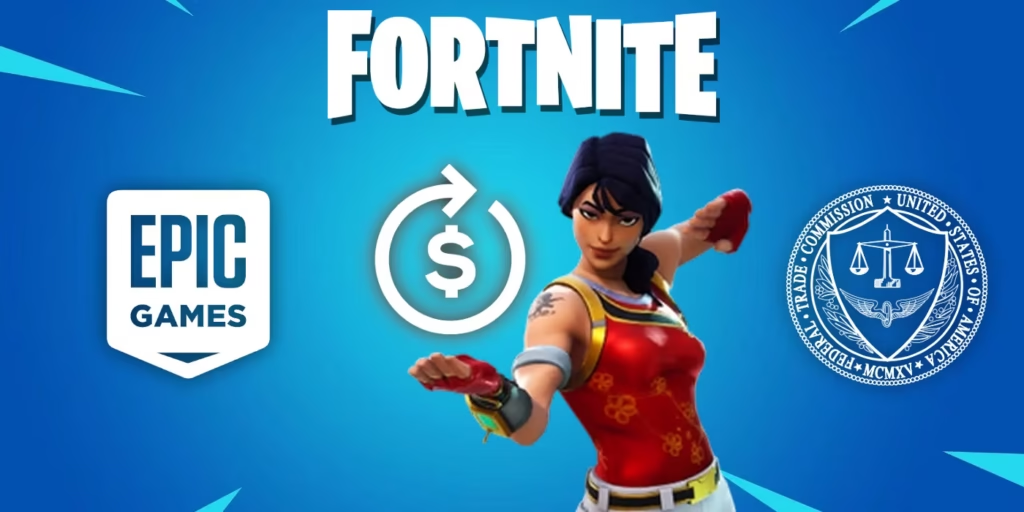
In December 2022, the U.S. The Federal Trade Commission (FTC) launched a historic enforcement action against Epic Games, the company behind Fortnite, a huge cultural and commercial phenomenon. The $520 million settlement was the largest ever and came at the end of a wide-ranging inquiry into the company’s privacy regulations and in-game business activities. This move, the biggest of its kind in the history of the gaming industry, was not just one punishment but a carefully planned two-part solution that focused on different types of bad behaviour.
$245 million fund to give money back directly to people who were hurt by what the FTC called unfair and misleading billing practices. The second was a record-breaking
A $275 million civil fine for breaking the Children’s Online Privacy Protection Act (COPPA) in several ways.
The size of this hamlet shows how powerful Fortnite is in the business and in culture. With over 400 million registered players by the end of 2022, the game is not only a product but a global platform for social interaction and business, particularly among children and young adults. The FTC said that Epic Games used a complex set of manipulative user interface designs, known as
“dark patterns,” to deceive millions of players into making unwanted purchases. Simultaneously, the agency determined that the corporation improperly acquired the personal data of its youngest players and exposed them to possible danger through loose, default-on communication settings.
This report provides an exhaustive analysis of the FTC’s case against Epic Games, examining the legal foundations of the complaints, the specific design practices that led to the settlement, the mechanics of the massive consumer refund program, and the broader, lasting implications for the global video game industry. The case represents far more than a financial penalty for one company; it is a watershed moment that has established powerful new legal precedents for digital consumer protection, challenged long-standing anti-consumer industry norms, and signaled a new era of aggressive regulatory scrutiny over the monetization and design of digital platforms worldwide.
Table 1: Breakdown of the FTC’s $520 Million Settlement with Epic Games
| Component | Amount | Legal Basis | Core Allegation |
| Consumer Refunds | $245 Million | Section 5 of the FTC Act (Prohibiting Unfair and Deceptive Practices) | Use of “dark patterns” and manipulative billing practices to induce unwanted in-game purchases and unfairly locking accounts that disputed charges. |
| Civil Penalty | $275 Million | Children’s Online Privacy Protection Act (COPPA) Rule | Illegally collecting personal information from children under 13 without parental notification and consent; enabling default real-time voice and text chat, exposing children to harm. |
Section 2: The FTC’s Complaint: A Two-Pronged Legal Assault
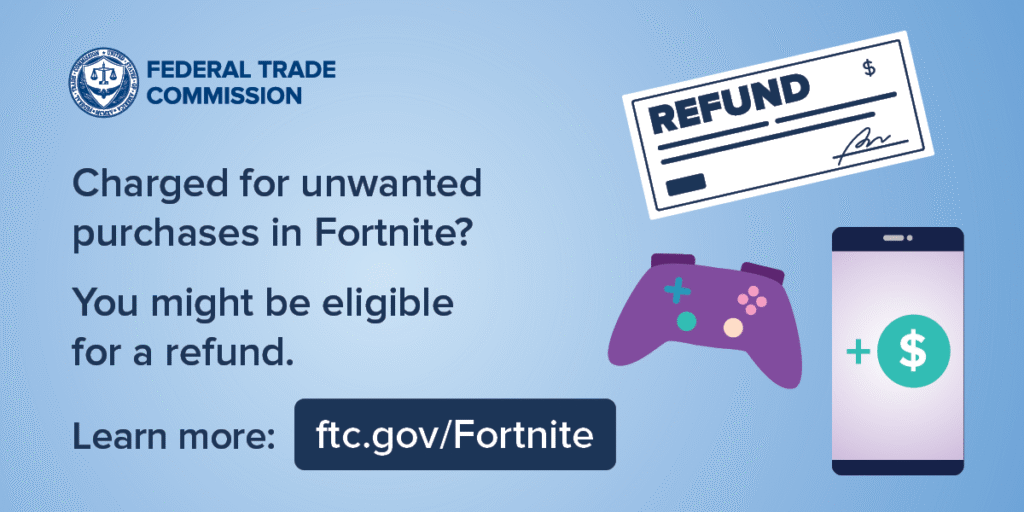
The FTC’s lawsuit against Epic Games was not a single, monolithic allegation but two discrete and distinct legal actions, each addressing a different set of offences under federal law. This dual-pronged strategy allowed the agency to address both immediate financial loss to consumers and broader statutory offences relating to child safety, resulting in the two record-breaking financial fines.
2.1 Deceptive and Unfair Practices: Weaponizing User Interface Against Consumers ($245M)
The first portion of the FTC’s case, which resulted in the $245 million consumer refund pool, was brought under the jurisdiction of Section 5 of the FTC Act, which allows the agency broad power to enforce “unfair or deceptive acts or practices in or affecting commerce”. The FTC’s administrative complaint asserted that Epic engaged in a series of similar tactics designed to create hundreds of millions of dollars in unlawful charges.
The key claim was the employment of “dark patterns” in the game’s design. The FTC’s lawsuit alleged that Fortnite’s “counterintuitive, inconsistent, and confusing button configuration led players to incur unwanted charges based on the press of a single button”. The agency presented clear and damning examples of this behaviour in action. Players might be charged for in-game products merely by attempting to wake the game from sleep mode, while the game was on a loading screen, or by hitting a button adjacent to one they intended to press, such as when trying to preview a cosmetic item. There was no separate confirmation step to prevent these unintentional purchases.
Compounding this difficulty was Epic’s handling of payment information. The FTC determined that, until 2018, the firm permitted youngsters to acquire the in-game money, V-Bucks, without requiring any action or approval from a parent or cardholder. Credit card credentials were routinely kept by default after the first use, enabling additional seamless, and often unauthorized, purchases.
Perhaps the most punishing behaviour cited by the FTC was Epic’s chargeback policy. When users detected unauthorized transactions and contested them with their credit card companies—a basic consumer right—Epic reacted by locking their Fortnite accounts. This means players, including some who had legitimately paid hundreds of dollars over the years, lost access to all of their purchased material. Even when an account was unlocked, Epic informed gamers they may be banned for life if they contested any future charges. The FTC highlighted that Epic maintained these rules despite receiving over one million customer complaints and internal concerns from staff about the sheer volume of erroneous charges.
2.2 Privacy Violations: A Record-Breaking COPPA Penalty ($275M)

The second legal action, which resulted in a historic $275 million civil penalty—the biggest ever for a violation of an FTC rule—was based on Epic’s failure to comply with the Children’s Online Privacy Protection Act (COPPA). COPPA requires online services geared at children under the age of 13 to offer notice to parents and acquire verifiable parental consent before collecting, using, or disclosing personal information from them.
The FTC’s complaint said that Epic had real knowledge that a significant percentage of the Fortnite player base was under 13, citing the company’s own user surveys and its marketing of Fortnite-branded toys and accessories. Despite this knowledge, Epic obtained personal information from these children without first getting parental consent, a flagrant violation of the law.
Beyond data collecting, the FTC took aim at the game’s default settings for communication. Fortnite allows live voice and text chat for all players by default, creating a perilous atmosphere for its youngest users. The lawsuit said that this practice subjected children to bullying, threats, harassment, and exposure to “dangerous and psychologically traumatizing issues such as suicide”. The agency stated that Epic’s own workers had voiced concerns and that the business had “resisted turning off the default settings” for years, only making modifications after the FTC’s public case was launched.
The choice to structure the settlement into two discrete monetary components was a creative and powerful enforcement approach. A single, hefty fine, while harsh, can be abstract for customers, as the proceeds often go to the U.S. Treasury and do not immediately reimburse the victims of the dishonest practices. By launching a separate $245 million refund program, the FTC could publicly and tangibly demonstrate that it was restoring money directly to harmed players, a clear success for consumers that produces enormous good public opinion. However, a refund program alone might not have been sufficiently punishing for a firm of Epic’s scale, nor would it directly penalize the separate and grave legal violation of COPPA. By levying a record-setting $275 million civil penalty
particularly for the COPPA breach, the FTC issued a significant deterrent message to the whole industry regarding the immense financial implications of disobeying child privacy regulations. This combined approach allowed the FTC to maximize its impact: it provided direct consumer redress, punished the company financially, created a clear legal distinction between the two types of violations, and established a potent model for future enforcement actions against major digital platforms.
Section 3: Anatomy of a “Dark Pattern”: Deconstructing Fortnite’s User Interface
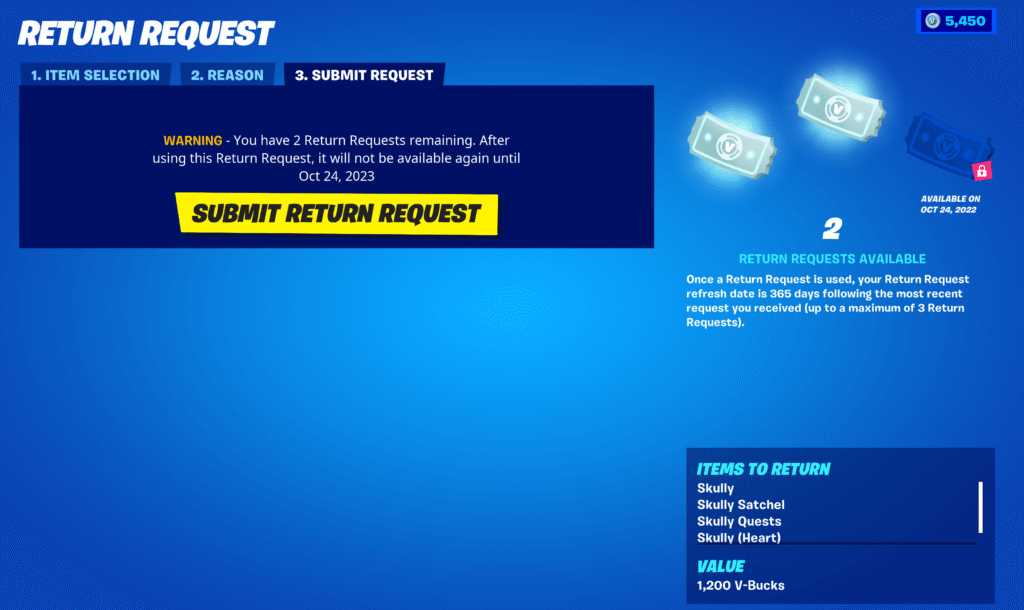
At the heart of the FTC’s complaint regarding deceptive billing was the accusation that Epic Games employed “dark patterns”—a term for user interface (UI) and user experience (UX) design choices intentionally crafted to manipulate users into taking actions they would not otherwise choose, such as making unwanted purchases or sharing more data than intended. The
Fortnite case represents a historic milestone, bringing the concept of dark patterns from the domain of scholarly critique into a legally actionable type of deceit under federal law.
Frictionless by Design, Deceptive in Practice
The FTC’s inquiry and subsequent lawsuit analysed how Fortnite’s interface, under the pretext of offering a “streamlined” experience, was structured to enable unintentional spending.
The Absence of Purchase Confirmation: The most fundamental problem, mentioned repeatedly by the FTC and in thousands of player complaints, was the complete lack of a confirmation step for in-game transactions made using V-Bucks. A single, often unintentional, push of a button was enough to conclude a transaction with no opportunity to reconsider or cancel. This design choice was a regular source of player unhappiness. One widely endorsed post on Reddit expressed the emotion perfectly: “I accidentally clicked on buy and it IMMEDIATELY bought it. Shouldn’t there be a ‘Yes-No’ confirmation system for purchases with the premium currency?”.
Inconsistent and perplexing Button Layouts: The FTC’s complaint described the game’s button design as “counterintuitive, inconsistent, and confusing”. On console controllers, for instance, the role of primary buttons could shift from one screen to the next. A player accustomed to pressing a specific button to “back out” of a menu would find that on the item purchasing screen, the same button now signified “buy”. This inconsistency abused muscle memory and led directly to unwanted purchases.
Obscured and Ineffective Refund Systems: The complaint further alleged that Epic purposefully made its refund and cancellation features difficult for players to locate. Even after implementing a “undo” feature for accidental purchases, the company later made it less effective by changing its name, reducing its size, moving its location on the screen, and adding a requirement to hold the button to complete the action—reintroducing friction into the one process that was meant to be frictionless.
The Human Cost: Player and Parent Stories
These design choices were not abstract defects; they had a tangible and often costly impact on players and their families. Online communities like Reddit become reservoirs for stories of frustration. Players recounted making inadvertent purchases after dropping a controller, when the game continued to take controller inputs even while minimized on a PC, or, in one very unique event, when water droplets on a mobile phone screen prompted a series of inputs that resulted in a purchase. The reoccurring question from the community was, “Why is it so easy to accidentally purchase, but so hard to make a refund?”.
For parents, the experience was generally one of shock and dismay when checking credit card accounts. The FTC’s own administrative complaint included a direct quote from a parent’s message to Epic that encapsulated the problem: “This account is associated with my 10 year old son’s account and I am really disappointed that there is no check and balances that alerted me of these charges, and a 10 year old can purchase coins worth almost $500 so easily”.
The FTC’s successful action against Epic Games highlights a significant inflection point in the regulation of digital design. For years, UX designers and consumer activists cataloged manipulative practices like “confirmshaming” or “roach motel” designs, but these critiques resided entirely outside a formal legal framework. The FTC’s complaint did not just accuse “bad design”; it explicitly adopted the phrase “dark patterns” and presented a real, legally tested definition based on Epic’s UI: a “counterintuitive, inconsistent, and confusing button configuration” that led to “unwanted charges”. By winning a huge settlement on this basis, the FTC has created a powerful legal precedent. Future plaintiffs and regulators no longer need to argue from basic principles that a manipulative UI is prohibited; they can now point to the
Fortnite case as a recognised example of a prosecutable offense. This has profound consequences far beyond gaming, as every digital interface—from e-commerce checkouts to social media privacy settings—can now be reviewed against this standard, creating a significant new vector for legal responsibility across the tech sector. The critique has been legitimized and weaponized.
Section 4: The Settlement’s Mandates: Remediation Beyond Monetary Penalties
Beyond the headline-grabbing cash fines, the FTC’s settlement placed a suite of major, non-monetary conditions on Epic Games. These restrictions prompted the corporation to completely re-engineer its commerce and privacy systems, addressing the main causes of the customer harm and privacy violations revealed in the complaints.
Reforming the Purchase Process
To correct the “dark patterns” that lead to undesired charges, the FTC decision mandated a thorough overhaul of the in-game purchasing procedure.
Affirmative permission: The decision clearly bans Epic from charging consumers for any goods or service without first receiving their “affirmative express consent”. This regulation directly challenges the prior approach where a single, ambiguous button press might trigger a fee.
“Hold-to-Purchase” feature: In response, Epic introduced a new “hold-to-purchase” feature. This technique forces players to press and hold a button for a brief length to affirm their purpose to buy, offering a clear and intentional action that serves as a direct precaution against the inadvertent “single-press purchase” issue.
Ending Punitive Account Locking
One of the most consequential sections of the settlement addressed Epic’s policy of punishing users who exercised their consumer rights.
Prohibition on barring Accounts: The FTC decision “bars Epic from blocking consumers from accessing their accounts for disputing unauthorized charges”. This is a direct ban of the company’s past practice of locking accounts that initiated credit card chargebacks.
New Chargeback Policy: Epic officially described its amended policy, indicating that it will now only suspend accounts where clear evidence of fraud are present, not in cases of valid chargeback disputes. As part of this adjustment, the business also said it has restored thousands of accounts that were previously blocked under the prior, punishing approach.
Overhauling Privacy and Payment Defaults
To address the COPPA violations and other privacy issues, the settlement imposed substantial changes to default settings, particularly for younger users.
Explicit Choice for Saving Payment Info: The practice of saving a user’s payment information by default was terminated. Under the new approach, players are offered a “explicit yes or no choice” to keep their payment details for future usage.
High Privacy Defaults for Minors: In a direct response to the COPPA complaint, Epic established a new system of high privacy default settings for all players confirmed to be under the age of 18. For these users, voice and text chat now default to “Nobody,” parties default to “Invite Only,” and tailored suggestions are switched off.
“Cabined Accounts”: For its youngest players (under 13 or their country’s age of digital consent), Epic introduced a new feature called “Cabined Accounts.” These accounts provide a tailored and safer gameplay experience where features like chat and purchasing are disabled entirely until a parent provides verifiable consent.
The FTC’s restriction against Epic freezing accounts for payment disputes constitutes a significant challenge to a long-standing and fundamentally anti-consumer industry practice. For years, a typical condition in the End User License Agreements (EULAs) of many digital businesses has indicated that initiating a chargeback constitutes a violation of the terms of service, providing the company the ability to terminate the user’s account. This method causes significant risk for consumers. A gamer who has invested hundreds or thousands of dollars in digital content is effectively kept captive, having to choose between disputing a single incorrect charge and risking the loss of their whole digital library. This creates a significant disincentive to seek lawful financial restitution. The FTC’s decision against Epic specifically proclaims this behaviour to be an unfair trade practice and makes it illegal for the corporation to continue. This was praised by users, with one Reddit user commenting that the order was practically telling Epic, “no, fuck your EULA”. This creates a tremendous precedent. While the judgement applies directly to Epic, it indicates to the whole digital business that this punitive paradigm is now recognised as unlawful by a significant federal regulator. The enforceability of identical agreements in the EULAs of other gaming companies, software providers, and digital platforms is now highly uncertain. This single clause in the settlement could ultimately have a more deep and pervasive impact on consumer rights than any other part of the lawsuit, effectively cracking the “EULA as shield” that businesses have long hidden behind.
Section 5: The Consumer Refund Program: Mechanics and Execution
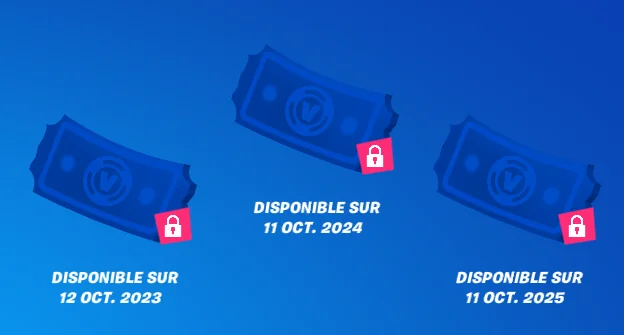
The $245 million consumer refund program is one of the largest of its kind operated by the FTC and offers the most tangible impact of the settlement for millions of affected Fortnite gamers. The execution of this program comprises a clear set of eligibility criteria, a specified application process, and a multi-stage distribution plan.
Program Overview and Administration
The FTC is responsible for managing the distribution of the $245 million fund to qualified U.S. consumers. To tackle the logistical difficulties of processing possibly millions of claims, the government has recruited a third-party refund administrator,
Rust Consulting, Inc. This administrator maintains the official claims website and provides direct support to consumers via a dedicated toll-free phone number (1-833-915-0880) and email address (admin@fortniterefund.com).
Eligibility Criteria
The FTC created three distinct approaches to eligibility. U.S.-based players or their parents may lodge a claim if they meet any one of the following conditions:
Unwanted In-Game Purchases: The consumer was paid in-game currency (V-Bucks) for cosmetic items or other material they did not want between January 2017 and September 2022.
Unauthorized Charges by a Child: The consumer’s child made charges to their credit card without their knowledge or permission between January 2017 and November 2018.
Punitive Account Locking: The consumer’s Fortnite account was locked between January 2017 and September 2022 after they protested what they considered were improper charges with their credit card company.
Application Process and Deadlines
The process for filing a claim is centralized and has a set deadline.
Official Portal: Claims must be submitted through the official website, which may be reached at www.ftc.gov/fortnite or directly at www.fortniterefund.com.
Required Information: To file, applicants must supply either a claim number, which the FTC emailed to millions of potentially eligible users, or their unique Epic Account ID.
Deadline: After initial deadlines passed, the FTC reopened the claims procedure. The ultimate deadline for all consumers to lodge a claim is July 9, 2025.
Age Requirement: The person submitting the claim form must be at least 18 years old. If the affected player is a minor, a parent or legal guardian must complete and submit the form on their behalf.
Payment Distribution and Details
The refund distribution is being handled in different rounds, with payout amounts varying based on the overall number of authorised claims.
Payment Rounds: The first round of payments was given in December 2024, totaling over $72 million to around 629,000 claimants. A second, larger installment was despatched in June 2025, distributing approximately $126 million to nearly 970,000 applicants. This takes the overall amount refunded to roughly $200 million of the $245 million fund, with a third wave of payments due in 2026 when all claims made by the July 2025 deadline are evaluated.
Payment Amounts and Methods: The average payment per claimant during the first two rounds has ranged from around $114 to $130. The final amount for any individual depends on various factors, including the total number of legitimate claims made. Claimants could choose to get their reward via a
postal check or a PayPal deposit. The FTC has mandated that cheques must be paid within 90 days and PayPal payments must be accepted within 30 days to avoid forfeiture.
Important Clarifications: The FTC and other authorities have made it clear that filing a claim would not negatively affect a player’s Fortnite account status or result in the loss of any purchased items. Additionally, customers have been reminded to be careful of frauds; the FTC and its administrator will never require a charge to submit a claim or get a refund.
Table 2: Fortnite Refund Program Eligibility and Key Dates
Eligibility Condition

Relevant Time Period
You were charged for unwanted in-game items or cash.
January 2017 – September 2022
Your youngster made unauthorized charges to your credit card.
January 2017 – November 2018
Your account was frozen after you contested charges.
January 2017 – September 2022
Claim Submission Deadline:
July 9, 2025
Official Claim Website:
www.ftc.gov/fortnite
Age Requirement:
Must be 18+ to file (or parent/guardian files for minor)
Geographic Limitation:
United States players exclusively
Export to Sheets
Section 6: Epic’s Response and Remedial Actions: Acknowledgment and Adaptation
In the face of a half-billion-dollar settlement and harsh public findings from the FTC, Epic Games implemented a carefully prepared public relations and operational approach. The company’s response includes public acceptance of the need for change, along with a quick implementation of the settlement’s necessary remedial activities, effectively reframing their compliance as a move toward industry leadership.
Public Acknowledgment and Framing
In a statement made in December 2022, coinciding with the settlement announcement, Epic Games adopted a tone of concession and forward-looking accountability. The company’s marketing seems aimed to offset reputational harm and position itself as a reformed, player-centric corporation. Several crucial sentences from this statement illustrate this deliberate framing:
“No developer creates a game with the intention of ending up here”. This introductory phrase quickly presents the problem as an unfortunate byproduct of innovation rather than intentional misconduct.
“We accepted this agreement because we want Epic to be at the forefront of consumer protection and provide the best experience for our players”. This comment pivots from the past to the future, presenting the settlement not as a punishment but as an opportunity for Epic to lead.
“The laws have not changed, but their application has evolved and long-standing industry practices are no longer enough”. This is possibly the most essential line in the statement. It serves as a subtle admission that its old techniques, while prevalent across the sector, were no longer legally or ethically defensible in the eyes of regulators. It simultaneously accepts culpability while gently dispersing accountability over the entire industry’s “long-standing practices.”
Concrete Remedial Actions
Epic acted promptly to implement the precise improvements necessary by the FTC decision, promoting these new procedures as proof of its dedication to a new, higher standard of consumer protection. The turnaround in company methods is dramatic when compared to the activities alleged in the FTC’s complaint.
Table 3: Pre- and Post-Settlement Practices at Epic Games
Practice Area
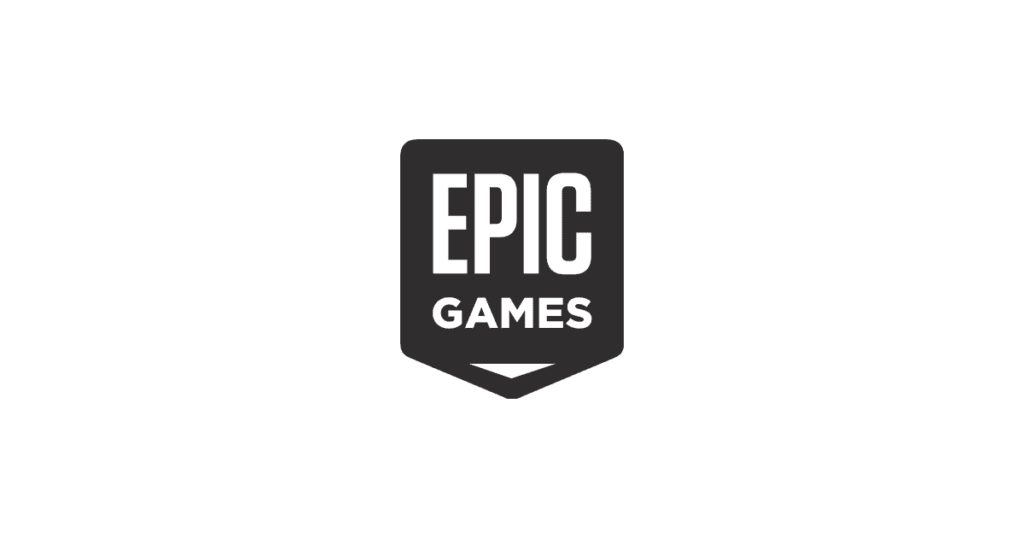
Pre-Settlement Practice (per FTC Complaint)
Post-Settlement Practice (per Epic & FTC Order)
Purchase Confirmation
No confirmation step; single button press accomplished purchase.
Implemented a “hold-to-purchase” mechanic requiring prolonged input to affirm intent.
Payment Information
Saved by default without explicit, express authorisation.
Now offers an explicit “yes or no” choice to save payment information.
Chargeback Policy
Accounts were frozen for disputing charges with credit card companies.
Accounts are no longer frozen for disputes, only when fraud indicators are present. Thousands of accounts were restored.
Child Privacy (Defaults)
Voice and text chat were on by default for all players, including youngsters.
High privacy settings are now default for those under 18; conversation defaults to “Nobody”.
Child Accounts
Children might make purchases without parental authorisation; no defined account type.
“Cabined Accounts” established for users under 13, blocking chat and purchases until parental approval is provided.
While these reforms were derived from a hefty regulatory penalty, Epic Games has cleverly presented its mandated compliance as proactive, volunteer leadership. This strategy not only helps to rebuild the company’s reputation but also cleverly exerts pressure on its competitors to adopt similar, more consumer-friendly standards. By actively championing these higher standards—such as unambiguous purchase confirmations and a liberal chargeback policy—Epic establishes a new baseline for consumer expectations. This puts companies like Sony, Microsoft, and Nintendo, whose refund and account procedures are frequently more stringent, in a tough position. Their old procedures can now be considered as archaic and anti-consumer when contrasted directly to the “new Epic” norm. In this approach, the FTC’s enforcement action has inadvertently supplied Epic with a tremendous lever to impose market pressure. The corporation has turned a substantial legal and financial loss into a strategic opportunity to seize the moral and commercial high ground on consumer trust, essentially driving the rest of the industry to develop alongside it.
Section 7: Voices from the Community: Player and Parent Testimonials

The FTC’s legal charges and Epic’s corporate responses give the official foundation for the Fortnite settlement, but the genuine impact of the company’s policies is best understood via the voices of the players and parents who experienced them personally. Online groups, particularly Reddit, offered an important avenue for sharing stories of irritation, perplexity, and financial loss, bringing essential human context to the regulatory action.
The Player Experience of Accidental Purchases
The architecture of Fortnite’s item shop was a regular subject of concern long before the FTC interfered. A common issue in player testimonials was the sheer simplicity of making an inadvertent purchase due to the lack of a confirmation screen. One user’s experience was typical: “Last night I accidentally purchased of the one of the skull skins when I meant to view the alternate styles. That was it, it was just mine all of a sudden with no ‘Are your sure?’ finalize-the-transaction screen”.
These were hardly isolated examples of carelessness. Players described circumstances where the game’s design seemed to conspire against them. One customer stated that Fortnite, even when minimized on their PC, continued to capture inputs from their controller, leading to an unwelcome purchase being made in the background while they were playing a different game entirely. The community’s collective outrage was reflected in a simple, poignant question made by a user: “Why is it so easy to accidentally purchase, but so hard to make a refund?”.
The Parent Experience of Unauthorized Charges
For parents, the issue often showed as a sudden and surprising discovery of big, illegal payments on their credit card accounts. The FTC’s inclusion of a parent’s complaint in its formal filing—detailing how their 10-year-old son had managed to spend nearly $500 without any parental notice or verification—was a situation that resonated with many families. News sources and consumer groups especially targeted parents in their coverage of the settlement, detailing how they may claim refunds for expenditures their children had made without their knowledge.
The implications of these unlawful charges might be serious, especially when combined with Epic’s draconian chargeback policy. One of the most striking anecdotes published on Reddit came from a member whose younger brother spent $1,200 on V-Bucks. When the family launched a chargeback through PlayStation, Sony banned the brother’s whole PlayStation Network account. As a result, he lost not just his Fortnite progress but also access to every other digital game he had ever purchased on the marketplace, rendering his console and digital library worthless. This example graphically demonstrates the high-stakes option families faced: accept the false charges or risk losing a significantly greater investment in digital property.
Community Reaction to the Refunds
As the FTC’s refund scheme began disbursing money in late 2024 and mid-2025, social media platforms and gaming forums lit up with conversation. Users on Reddit and TikTok widely reported getting payouts, with sums varied from as low as $20 to as much as $250. The surprising entry of money into PayPal accounts originally caused some skepticism, with users enquiring if the deposits were part of a scam—a testament to a prevalent consumer fear of “too good to be true” promises. This mistrust was gradually removed as more and more people certified they had received valid payments from the FTC’s administrator.
Amid the relief and surprise, there was also a cynical but widely agreed remark about the likely outcome of the returns. As one TikTok user commented, “epic smart cuz most people will just buy skins with anyway lol”. This view suggests that a major chunk of the approximately quarter-billion-dollar return pool would likely flow directly back into the
Fortnite ecosystem, a final, ironic twist in the long saga of the game’s monetization.
Section 8: Precedent and Prognosis: The Ripple Effect on the Global Gaming Industry
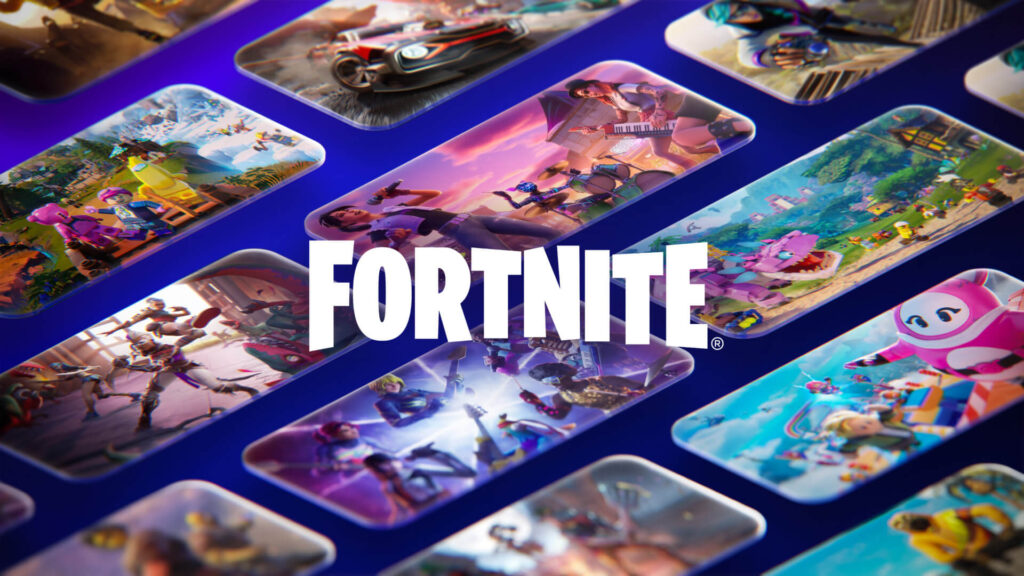
The FTC’s settlement with Epic Games was not an isolated incident but a seismic one, sending shockwaves through the worldwide video game industry and the larger digital economy. The case has set important legal precedents, promoted a global convergence of regulatory norms, and created a new baseline for consumer expectations that puts pressure on all major actors in the market.
The New Legal Landscape for Digital Platforms
The long-term impact of the settlement is entrenched in the legal precedents it has set. As previously discussed, the order’s clear prohibition on locking accounts for credit card chargebacks has fundamentally damaged the “EULA as a shield,” a defensive posture long held by digital service providers. The enforceability of such punitive clauses in other companies’ terms of service is now very disputed under U.S. consumer protection law.
Furthermore, by successfully prosecuting Epic for its use of “dark patterns,” the FTC has essentially defined a legal framework for identifying and contesting manipulative UI/UX design. This puts the whole computer sector on notice that design choices geared at deceiving users into unexpected acts are no longer merely a matter of ethical discussion but a source of severe legal and financial responsibility.
Regulatory Convergence: The FTC and the EU
The FTC’s action did not occur in a vacuum. It fits closely with a parallel and rising campaign for enhanced consumer protection in the video gaming business from European regulators. The European Union’s Consumer Protection Cooperation (CPC) Network has developed new rules that target the very same behaviours mentioned in the Fortnite case.
The EU standards demand for:
Enhanced Price Transparency: Requiring that the price of in-game content be displayed in real-world currency (e.g., euros) alongside any virtual currency price.
An End to Manipulative Bundles: Discouraging the prevalent practice of selling virtual currency in bundles that purposefully exceed the amount needed for a specific purchase, so driving users to overspend or leave a residual, unusable balance.
Protection for Vulnerable Users: Mandating powerful and easily accessible parental controls and outlawing marketing methods that exploit the vulnerabilities of minors or push them to make purchases.
The simultaneous regulatory pressure from the two largest consumer markets in the world—the United States and the European Union—is creating a tremendous pincer movement on the global gaming sector. For a firm like Epic, which operates Fortnite as a single, global service, maintaining multiple sets of regulations and shops for different areas is technologically hard and logistically burdensome. The most efficient road forward is to adopt a single, universal policy that complies with the strictest legal standards. This phenomenon, where companies adopt the high standards of a major regulatory bloc (like the EU) as their global default, is often referred to as the “Brussels Effect.” The combined pressure from the FTC and the CPC is likely to create a de facto global standard for microtransaction transparency and fairness, with the Fortnite case serving as the primary catalyst. Epic’s own statement, expressing the hope that its modifications will serve as a “helpful guide for others in our industry,” is an implicit admission of this new reality.
A Comparative Look at Industry Practices
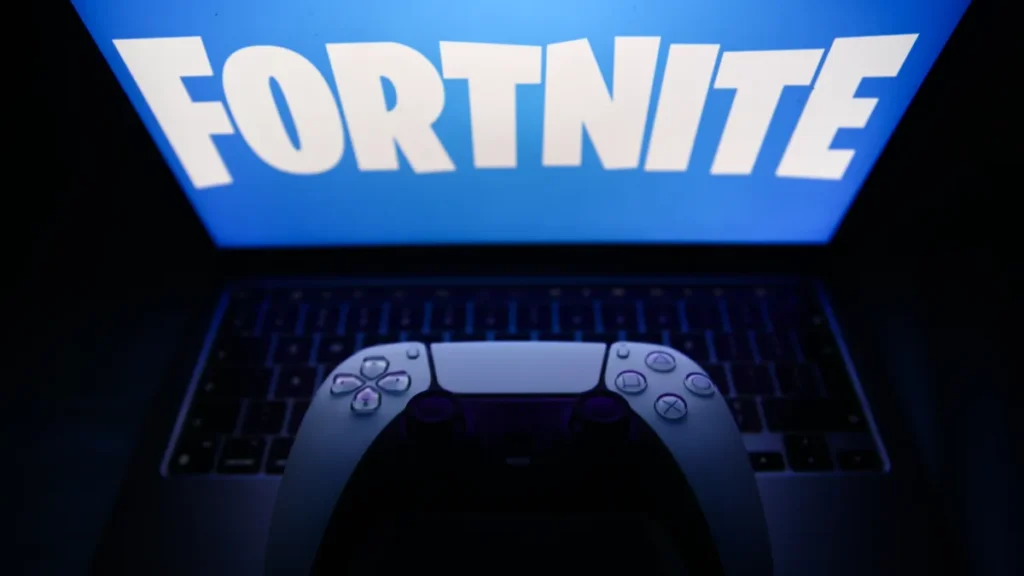
The modifications necessary for Epic throw the behaviours of its competitors into sharp contrast, revealing a market that is now under pressure to innovate. A simple comparison indicates the developing difference between the new “Epic standard” and the rules of other key platform holders:
Nintendo: Has always maintained one of the tightest digital refund policies in the industry, clearly declaring that it cannot issue refunds for accidental purchases, purchases of the wrong material, or if a player simply did not like a game.
Sony PlayStation: Offers a 14-day refund window for digital games and add-ons, but with a significant caveat: the user is ineligible for a refund once they have started to download or stream the purchased content, unless the content is malfunctioning.
Microsoft Xbox: Appears to offer a more flexible refund mechanism for digital games, but still with major limitations and on a case-by-case basis.
Electronic Arts (EA): The user agreement for EA’s services specifically specifies that its virtual currency (such as those utilised in its popular sports games) are non-refundable and have “no monetary value” outside of its own services.
As consumers and regulators grow more aware to the issues of dark patterns and fair commercial practices, these more restrictive laws are expected to encounter increasing scrutiny and pressure for reform.
Section 9: Conclusion and Recommendations for Industry Stakeholders
The Federal Trade Commission’s record $520 million deal with Epic Games is a watershed moment in the history of digital regulation. It transcends the specifics of a single video game, providing important new precedents that change the legal boundaries for user interface design, consumer rights in the digital age, and corporate responsibility for child privacy. The case has proved the effectiveness of a dual-pronged enforcement strategy that combines direct consumer redress with harsh civil fines, producing a model likely to be duplicated in future proceedings. By effectively prosecuting “dark patterns” as a type of legally actionable fraud and shattering the “EULA as a shield” for punitive actions like account-locking, the FTC has radically rebalanced the relationship between digital platforms and their users. This action, exacerbated by analogous legislative measures in the European Union, indicates the end of an age of lax monitoring and heralds a new global norm for transparency, fairness, and safety in the digital economy.
Based on this detailed research, the following strategic recommendations are made to key stakeholders within the digital ecosystem.
Recommendations for Game Developers and Publishers
Conduct Proactive UI/UX Audits for Deceptive Design: Companies should instantly move beyond conventional A/B testing focussing exclusively on engagement and conversion metrics. They must establish formal internal review processes to audit all commercial interfaces—including item shops, checkout flows, and subscription sign-ups—specifically to identify and eliminate potential “dark patterns.” This audit should assess for confusing layouts, inconsistent button functions, obscured information, and any design element that could lead to a consumer making an unintended financial decision.
Adopt a “Transparency by Default” Monetization Model: In anticipation of evolving worldwide standards, developers should proactively build clear, unambiguous, multi-step purchase confirmation processes for all transactions. Furthermore, they should begin displaying real-world dollar equivalents next to all virtual currency values. This not only creates consumer trust but also future-proofs their platforms against inevitable regulatory needs from entities like the EU’s CPC Network.
Fundamentally Re-evaluate EULAs and Account Policies: Legal and policy teams must perform a thorough evaluation of their End User License Agreements and terms of service. Punitive provisions, particularly those that threaten account termination for legal credit card chargebacks, should be deleted or drastically altered. The Fortnite precedent implies these agreements are now legally vulnerable and offer a serious reputational and financial risk.
Recommendations for Platform Holders (Sony, Microsoft, Nintendo)
Standardize and Simplify Digital Refund Policies: The present hodgepodge of restricted and frequently confusing refund policies across major console platforms is no longer tenable. Platform holders should work to advance toward a more unified, transparent, and consumer-friendly standard for digital refunds that allows for redress in circumstances of accidental purchase or dissatisfaction, putting their policies in line with expanding consumer and regulatory expectations.
Enhance and Centralize Parental Controls: While individual developers have responsibility, platform holders are well positioned to provide a powerful first line of defense for families. They should invest in upgrading platform-level parental controls, making them more granular, easier to locate, and simpler to operate. This includes features for setting spending limits, approving individual purchases, and managing communication settings across all games on the platform, thereby decreasing the compliance load on individual developers and creating a more consistent safety net for youngsters.
Recommendations for Regulators and Policymakers
Strengthen International Regulatory Collaboration: The concurrent initiatives by the U.S. FTC and the EU’s CPC Network highlight the power of regulatory convergence. These authorities should formalize and strengthen their partnership to produce consistent, interoperable worldwide standards for digital consumer protection. This will prevent corporations from exploiting regulatory arbitrage and will expedite the adoption of ethical design approaches worldwide.
Expand Enforcement Beyond the Gaming Sector: The concepts and legal precedents established in the Fortnite case are broadly applicable. Regulators should now systematically apply this methodology to other digital industries where dark patterns are common, including e-commerce, travel booking sites, subscription-based services, and social networking platforms. The Fortnite lawsuit should serve as the framework for a broader assault on deceptive design across the whole digital economy.
Promote Public Education on Digital Consumer Rights: Alongside enforcement, regulatory organisations should invest in public awareness initiatives to educate consumers about their rights and the manipulative strategies used in deceptive design. An informed and empowered digital citizenry is a critical component of a healthy and fair digital economy, capable of recognizing and reporting harmful activities, hence creating market pressure for ethical behavior.
Fortnight Refund
Just tried Sprunki Incredibox and loved the fresh beats and visuals-it’s like a musical upgrade from the original! So much creative fun in one game.
That immersive feeling in live dealer games is everything! Seeing real cards dealt adds so much to the experience. Just explored arionplay download apk – easy signup & local payment options like GCash are a huge plus for PH players! 👍
It’s fascinating how easily we fall into patterns when gambling – loss aversion is real! Seeing platforms like ph978 casino vip offer varied games (slots, live tables) could actually increase that feeling, ironically. Understanding those biases is key to responsible play!